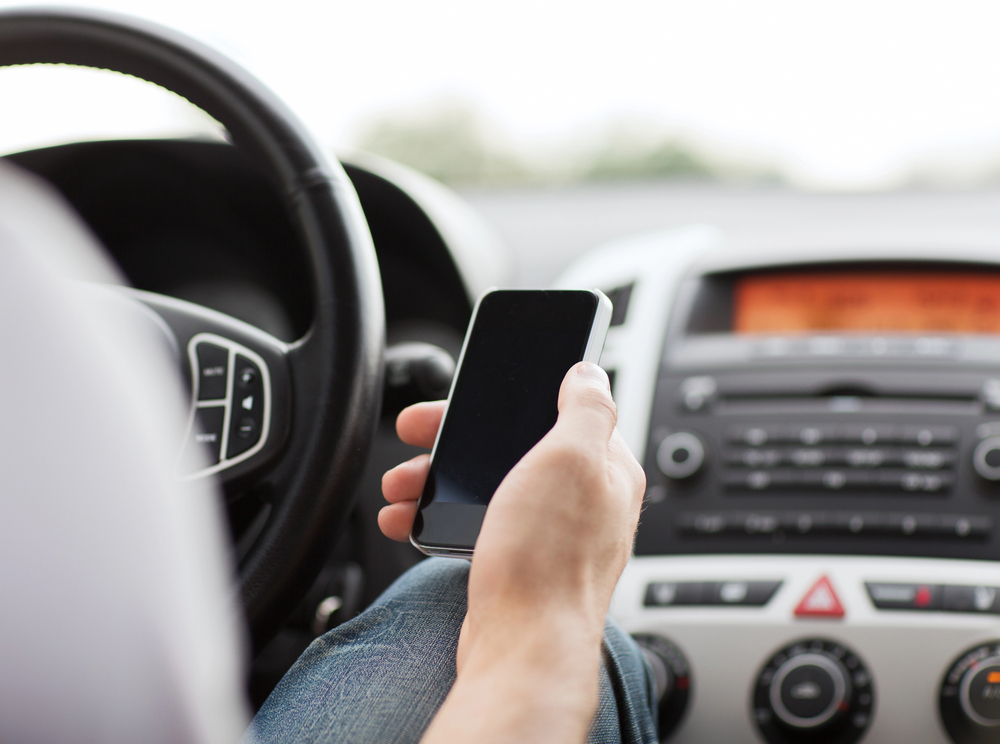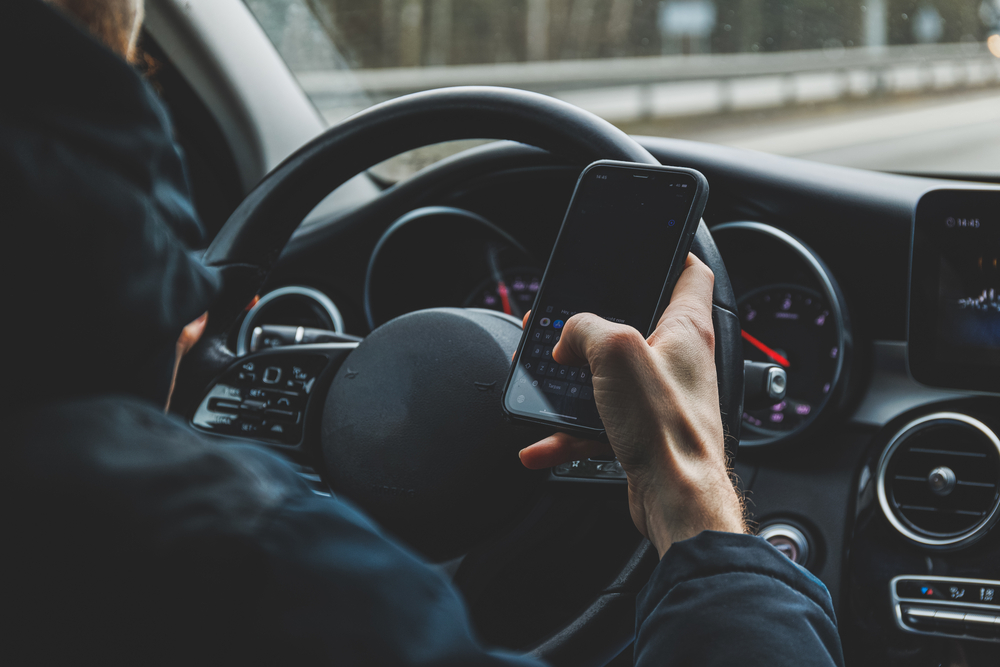
What Are Some Forms of Distracted Driving?
Distracted driving is any activity that diverts attention from driving, increasing the risk of a crash. The Centers for Disease Control and Prevention (CDC) categorizes distracted driving into three main types: visual, manual, and cognitive.
Visual Distraction
Visual distraction involves taking your eyes off the road. This can include activities such as:
- Reading text messages or making calls
- Adjusting the GPS or other electronic devices
- Gazing at scenery or objects outside the vehicle
- Checking on passengers or pets in the backseat
- Reading a map or looking at a navigation system
When drivers take their eyes off the road, they are more likely to miss critical information such as traffic signals, pedestrians, or other vehicles.
Manual Distraction
Manual distraction occurs when a driver takes their hands off the steering wheel. This can include activities like:
- Eating or drinking
- Adjusting the radio or other controls
- Grooming or applying makeup
- Reaching for objects inside the vehicle
Driving requires constant control of the vehicle, and taking hands off the wheel increases the likelihood of losing control or being unable to react quickly to potential hazards.
Cognitive Distraction
Cognitive distraction involves diverting mental attention away from driving. This can happen when a driver’s mind is occupied with activities such as:
- Daydreaming or being lost in thought
- Talking on the phone (even hands-free)
- Engaging in deep or emotional conversations with passengers
- Listening to distracting music or podcasts
Even if a driver’s eyes are on the road and hands are on the wheel, cognitive distractions can impair decision-making and reaction times. This type of distraction is dangerous because it may not be immediately apparent to others on the road.
It’s important to note that many activities can involve a combination of these distractions. For example, using a cell phone while driving involves visual, manual, and cognitive distractions simultaneously, making it one of the most dangerous forms of distracted driving.
How Do You Establish Negligence After a Distracted Driving Accident?
Establishing negligence after a car accident involving a distracted driver is crucial for pursuing a successful personal injury claim. A strategic approach to strengthening your case is essential when dealing with a distracted driving accident.
Consulting with an experienced accident attorney can be instrumental in navigating the claims process and understanding injury laws.
Gather Evidence
Begin by collecting evidence related to the car accident. This may include photos of the accident, vehicle damage, and visible injuries. Additionally, obtain witness statements and gather relevant documents, such as the police report.
Prove Distracted Driving
Establishing that the other driver was distracted during the accident is central to proving negligence. Look for any signs of distracted behavior, such as phone records, eyewitness accounts, or admissions by the driver. Distracted driving laws and regulations may vary, so understanding local driving laws is crucial.
Review Rear-End Collisions
In many cases, distracted driving leads to rear-end collisions. It could strengthen your case if you were rear-ended, as the driver who rear-ends another vehicle is often considered at fault. This supports the argument that the distracted driver failed to maintain a safe following distance.

Establish Duty of Care
To prove negligence, it is essential to establish that the distracted driver owed you a duty of care and breached that duty by engaging in distracted behavior. The breach of duty must be directly linked to the accident and resulting injuries.
Document Injuries
Seek medical attention promptly and thoroughly document your injuries. Medical records, bills, and expert opinions can indicate the extent of your injuries. This documentation is crucial when seeking financial compensation for medical expenses and other damages.
Navigate the Claims Process
Work with your accident attorney to navigate the claims process efficiently. They can communicate with insurance companies on your behalf, negotiate a fair settlement, and seek financial claims. If a satisfactory settlement cannot be reached, the attorney can guide you through the legal proceedings to seek compensation through litigation.
Consult Injury Lawyers
Seek the expertise of injury lawyers or consult law firms specializing in car accident cases. These attorneys can provide valuable insights into injury laws, guide you through the legal process, and help determine the strength of your claim. They are well-versed in navigating the complexities of the claims process and can advocate for your rights.
How Can Temple Injury Law Help Me?
If you’ve been involved in a distracted driving accident in Las Vegas, Temple Injury Law is here to help. Our experienced team understands the complexities of these cases and is committed to fighting for the compensation you deserve.
You can take the first step towards seeking justice and holding responsible parties accountable for their actions – schedule a consultation with us. We will guide you through the legal process, ensuring your rights are protected every step of the way.



